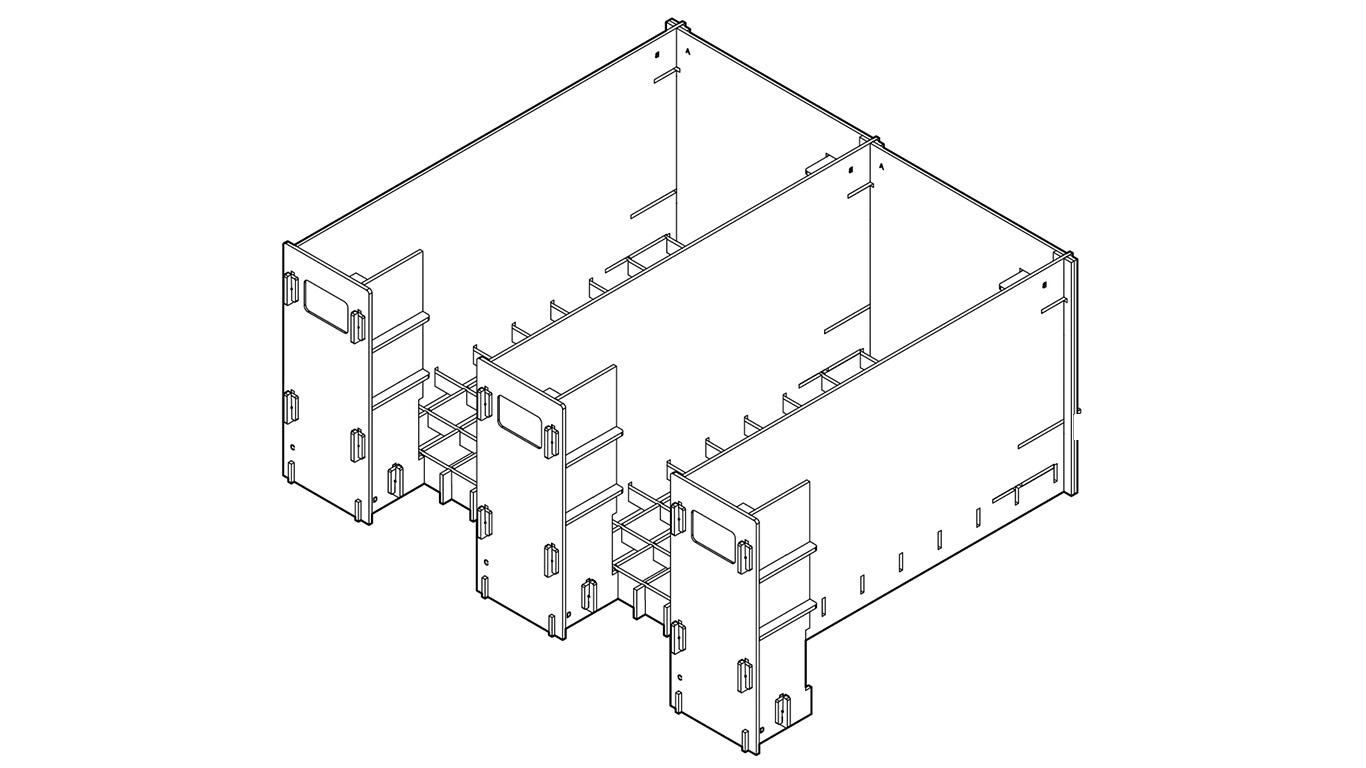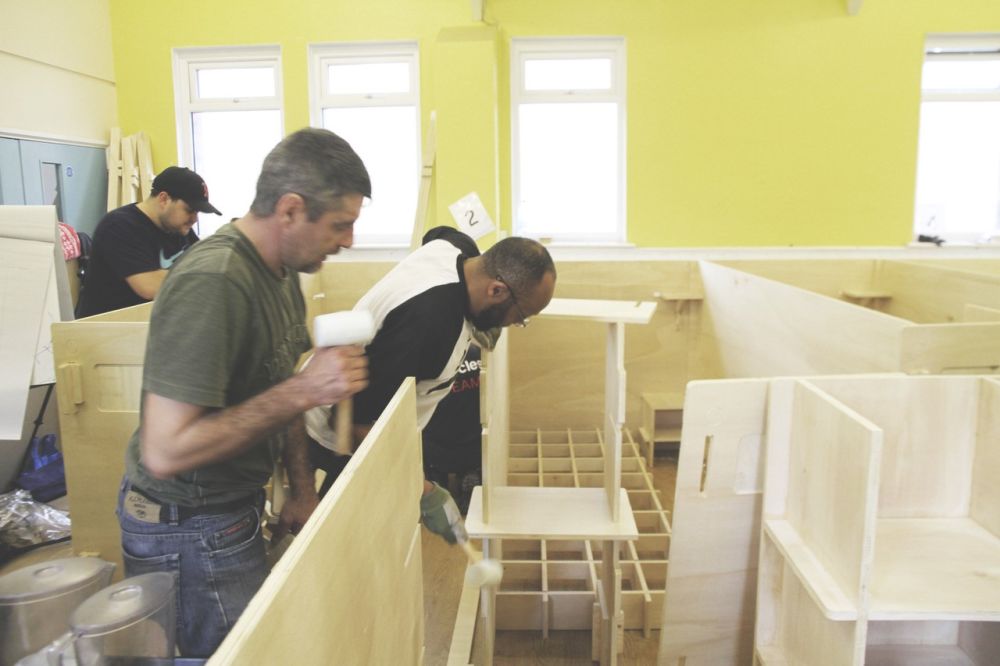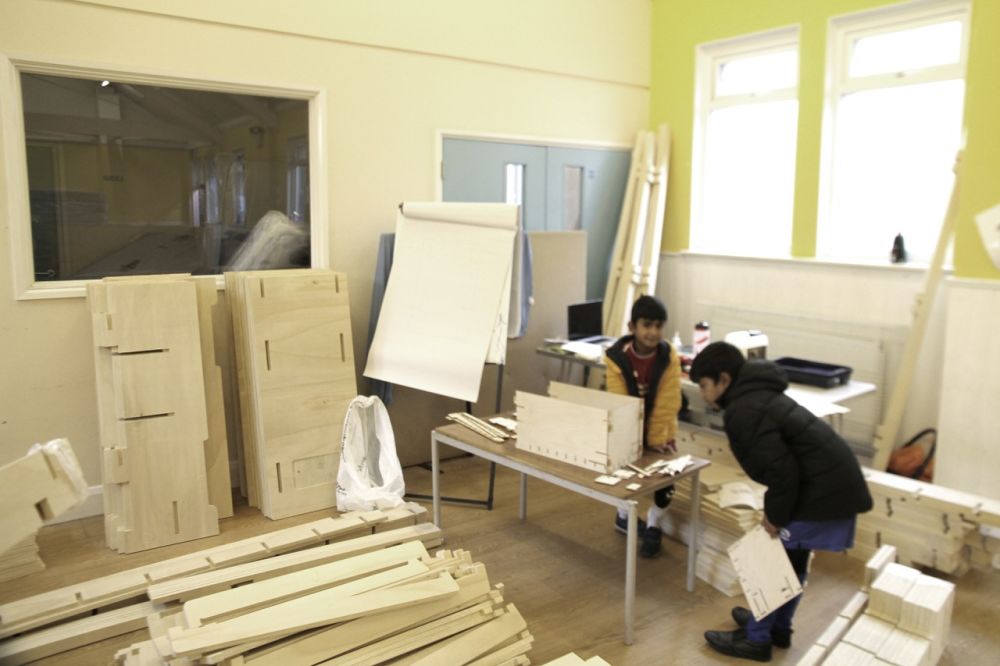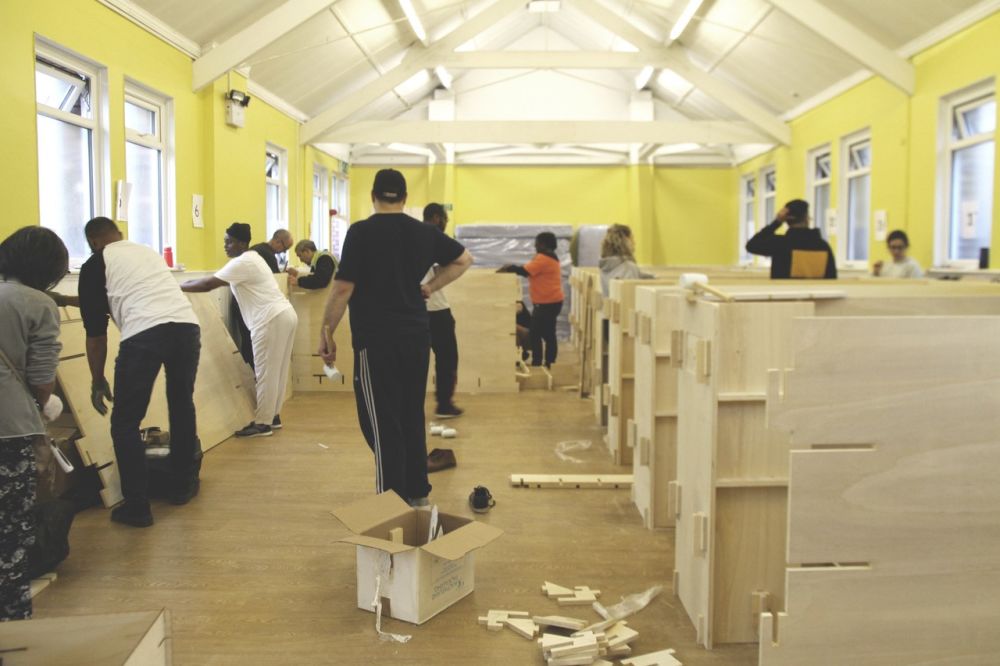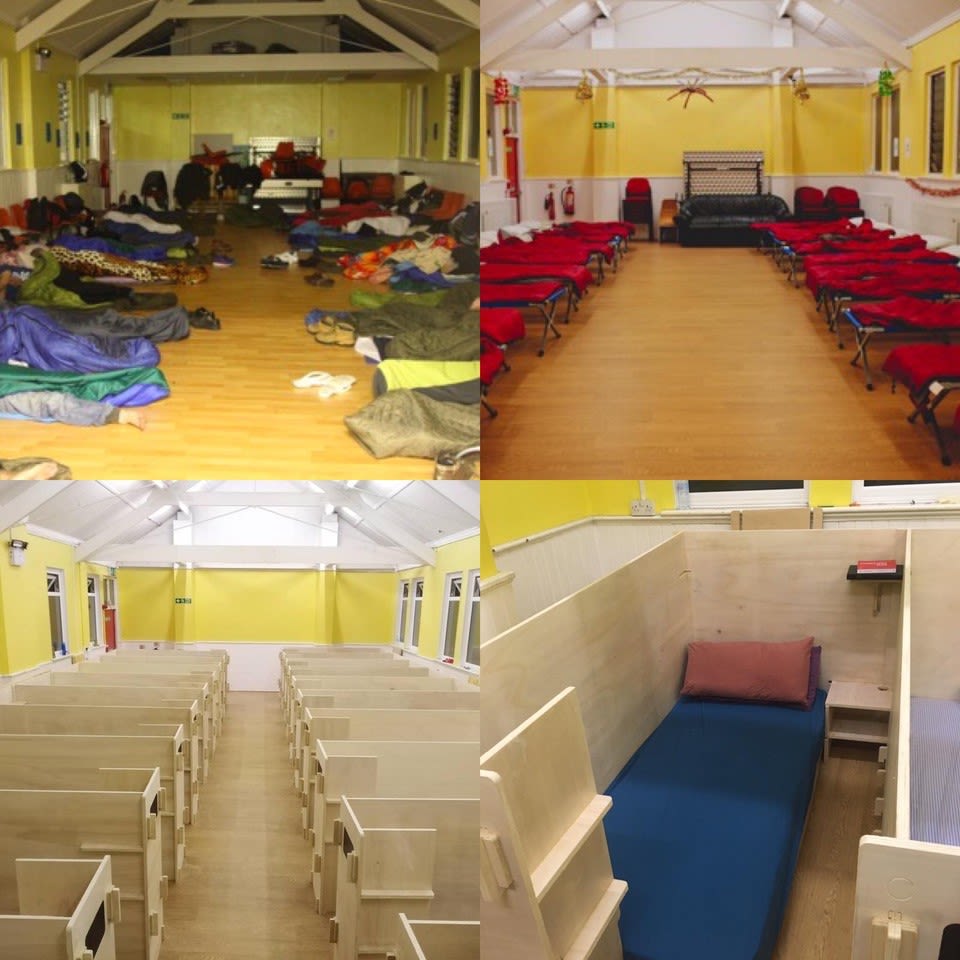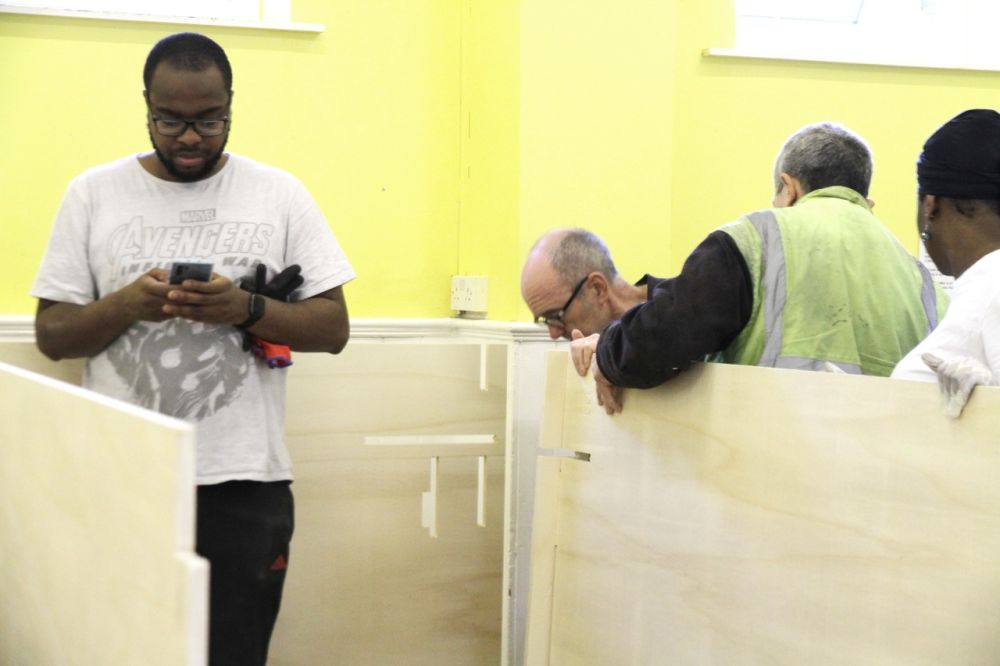M ARCH: Architecture student George Fisher has created sleeping pods for a homeless shelter in Redbridge.
In his first year, George Fisher was introduced to the London Borough of Redbridge. Exploring the area and mapping its infrastructure, students were free to define their scope of work. Fisher focused on the experience of local homeless people and began volunteering at the Redbridge Cold Weather Centre based at Ilford Salvation Army.
The shelter provides food and camp beds for 28 guests each night during the winter months and Fisher wondered if he could improve the facilities. He came across open source bed structures designed by Reed Watts architects intended to be downloaded and CNC-cut from plywood sheets. Though they would undoubtedly make a big difference to the experience of the guests, implementing the existing design would have reduced the centre’s capacity by more than half so Fisher set about adapting it.
Tinkering quickly turned into a redesign. Keeping the connection details – meaning the beds can still be built using only a mallet – he reduced the dimensions and added storage, shelving, a bedside table and a plaque where guests could write their name. “It’s about giving more privacy, dignity, comfort, a sense of defensible space,” explains Fisher, “the space is theirs to look after.”

“This is not the solution. This is a sticking plaster. Homelessness shouldn’t exist, the night shelter shouldn’t exist. But they do, so let’s make them better for now while we come up with long term solutions.”
George Fisher
The pods were installed by Fisher and volunteers at the centre. Speaking to the Ilford Recorder, a spokesperson for Ilford Salvation Army said: “There were tears of joy this evening when the men and women sleeping there saw the improved facilities.”
The architecture student continues to volunteer at the centre, allowing him to quietly see how his designs are being used. The original Reed Watts pod design were full height, something the Salvation Army requested Fisher alter for security reasons. But lowering the height of the structures brought additional benefit creating communal boundaries that guests could lean over and chat together, reminiscent of a garden fence.
Gallery
Reed Watts and Commonweal Housing, who created the initial design, have approached Fisher to include this modified version alongside their own in an open source catalogue of homeless pods for night shelters throughout the UK. Fisher’s design will be available to whoever wants it – indeed, there’s already been interest from a Salvation Army in both Mississippi and the Netherlands.
The pods form just a part of Fisher’s project. He has designed a map of homeless provisions within Redbridge, which the local council supported and for his final year is looking at the path from homeless to homeowner:
“What’s important is working where there’s inequality. I want to use my skills to help people who need them most. Now I’m looking further afield, asking how do you help people out of these pods and into a new life.”
